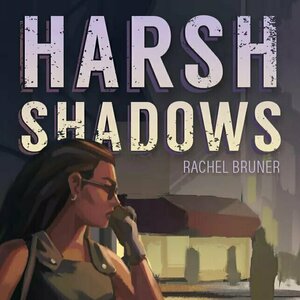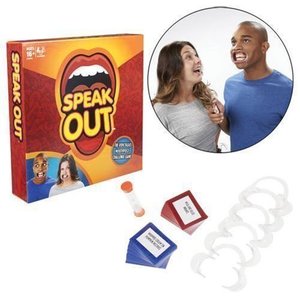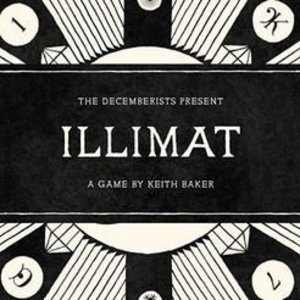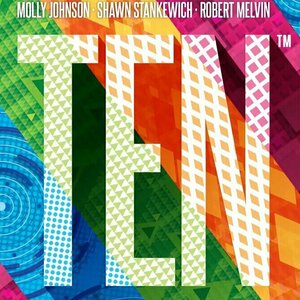
Card Wars Kingdom - Adventure Time
Games and Entertainment
App
NOTE: This game requires an iPad 4 / iPhone 5s / iPod Touch 6th Gen or above. Take Card Wars to the...
Purple Phoenix Games (2266 KP) rated Harsh Shadows in Tabletop Games
Apr 20, 2021
Disclaimer: We were provided a copy of this game for the purposes of this preview. The pictured components might not be finalized, and could differ after a successful Kickstarter campaign. -L
Harsh Shadows is a solo card game of hand management, grid movement, and deduction where you are an agent working to collect evidence necessary to apprehend an enemy spy. To setup for a game, randomly place the 9 Location cards in a 3×3 grid. Prepare the Discovery deck as described in the rules, place 1 face-down Discovery card to the right of each Location, and place the rest of the deck off to the side of the grid. Shuffle the Confiscated Item cards and deal the appropriate number to each of the Case File cards – 3 to Evidence, 1 to Red Herring, and 4 to False Leads. The Spy card is placed on the upper-left-most Location, and your Agent card on the lower-right-most Location. Shuffle the Spy Movement cards, and the game is ready to begin! It should look similar to the picture below.
The game is played over a series of rounds in which you will be moving your Agent, performing additional actions, and then moving the Spy. The goal is to track down the Spy, with the correct evidence in hand, before the Spy is able to flee the scene. The first thing that you will do each round is to move your Agent. You may only move to a Location that is adjacent or diagonal to your current Location. Once you move to a new Location, you will draw the top Discovery card from that Location. Discovery cards will either be Items, Clues, or Bombs. Items are collected as potential Evidence, Clues are used to reveal Confiscated Items from Case Files, and Bombs force you to discard a card from your tableau. After you have moved and collected a new Discovery card, you may perform any/all of these additional actions: Use Clue Cards, Place the Tracking Bug, Track the Spy, or Use your current Location’s ability. To Use Clue cards, you will discard a number of clues in order to reveal a Confiscated Item card from a Case File. The Confiscated Items under the Evidence Case File show the 3 items you are required to have in hand to apprehend the Spy by the end of the game. The item under the Red Herring, if you have it in hand at game’s end, will cause you to automatically lose. The 4 items under the False Leads will neither help you win, nor cause you to lose – they simply offer fodder for you to discard when necessary.
Another element required to win the game is to place the Tracking Bug on the Spy. On your turn, you may place the Tracking Bug at your current Location card – if the Spy moves to the Location on a future turn, they are considered to be ‘bugged’ and the Tracking Bug is live! Twice per game, you are allowed to Track the Spy. To do so, you will look at the top card of the Spy Movement deck, and return it to the top. This just lets you see to which Location the Spy is about to move. And finally, you can use your Location’s ability. Once you have taken as many of the additional actions as you want, it is time to move the Spy. Reveal the top card of the Spy Movement deck, and move the Spy in the appropriate direction to a new Location. At the Spy’s new Location, add a Discovery card to its pile. Play continues in this manner until either you make an accusation, or the Spy escapes. In order to make an accusation, you must have Evidence cards in hand, the Spy must be bugged, and you must be at the same Location as the Spy. When you make an accusation, you will reveal any remaining cards under the Evidence and Red Herring Case Files. If you have the 3 matching Evidence cards, you win and apprehend the Spy! BUT if you have the Red Herring card, or you are missing any of the required Evidence cards, you lose. If you haven’t made an accusation in time, the Spy could escape, causing you to lose the game as well – I’ll leave those details for you to discover on your own!
In theory, Harsh Shadows seems like a neat and strategic card game, but how does it hold up in reality? Pretty well, actually! The first thing I want to talk about is how strategic it is, even with its elements of deduction. You need to collect Evidence fast in order to catch the Spy, so what’s the best plan of movement? Also, each Location has a special ability, so is there an ability you need to use now or do you want to wait a bit longer? After using a Location’s ability, it is no longer available for the rest of the game, so you have to time those uses carefully. Along those lines comes the deduction. Sure, you can try to reveal all the Confiscated Items so that you’re 100% sure that you’ve got the right Evidence. But if you don’t work fast enough, the Spy could escape. Are you willing to risk only knowing for sure what 1 piece of Evidence in order to confront the Spy before it’s too late? Or do you want to save up Clues to purchase that coveted Red Herring, to know for sure what not to keep in order to win. There’s a balance of risk with deduction, as well as a real-time element in the sense that the game has a finite amount of rounds. You’re not racing a physical clock, but once the Discovery deck runs out, the Spy is considered to be on the run, on the verge of escaping. Overall, this is a casual card game, but it has a decent amount of strategy to keep you engaged and entertained.
Let’s touch on components for a second. Obviously, this is just a card game, and this is a preview copy. As I said earlier, the final production could differ from this version, but I have to say that this preview copy is good quality. The cards are nice and thick, the artwork thematic and clean. I imagine the rules would get some final edits for slight clarifications, but for the most part the production quality is already pretty decent.
I have to say that Harsh Shadows surprised me. I’d never played a solo game with deduction elements, and it was actually quite exciting. Usually the deduction games I’ve played are based around sussing out a traitor amongst a group of people, so there is that human interaction element that can really help guide your thoughts and decisions. In Harsh Shadows, there’s nobody but yourself – you can’t look for tells in other players because the cards won’t speak to you. It feels riskier in this way because it’s more a game of odds then, instead of your ability to pick out social cues. Other people may feel differently, but I thought this was a neat twist on the deduction mechanic. If you’re looking for a strategic solo game, that plays relatively quickly and casually, I would definitely recommend checking out Harsh Shadows. It goes live on Kickstarter here in April, and I look forward to following its progress!
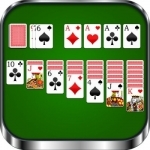
Solitaire Classic!
Games and Lifestyle
App
Solitaire fan? You will love this classic edition for your iPhone, iPod and iPad. A top developer...
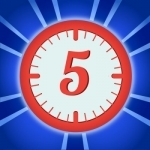
Tuku Tuku - 5 Second Rule Family Game
Games and Entertainment
App
Tuku Tuku is a multiplayer party game, that is all about reflex and acting under the pressure of...
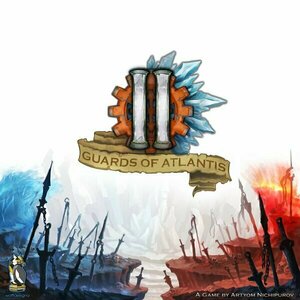
Guards of Atlantis II: Tabletop MOBA
Tabletop Game
Guards of Atlantis: Tabletop MOBA is a competitive "zero-luck" team-based board game inspired by...
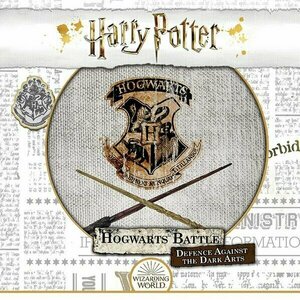
Harry Potter: Hogwarts Battle - Defence Against the Dark Arts
Tabletop Game
Harry Potter™ Hogwarts™ Battle Defence Against the Dark Arts is a competitive deck-building game...
Grahm Eberhardt (5 KP) rated Illimat in Tabletop Games
Jun 24, 2018

Please Fix the Teleporter
Tabletop Game
Oh no! The teleporter is broken! Can you help the hapless crew to unscramble themselves? In the...
Purple Phoenix Games (2266 KP) rated TEN in Tabletop Games
Nov 28, 2021
Disclaimer: We were provided with a copy of TEN for the purposes of this review. This is a final production copy, so what you see pictured is what you would receive in a retail copy of the game. -L
TEN is a push-your-luck game of set collection and auction/bidding in which players are trying to amass the most points by the end of the game. Points are earned by collecting sets of numeric sequences in the 4 colors of the game: Blue, Green, Pink, and Orange. Played over a series of turns, players will be drawing/collecting cards from the tableau, buying cards from the Market, or Busting if they push their luck a bit too far. To setup for a game, assemble the deck of cards as dictated by the player count and set it in the play area. Each player gets 5 Currency tokens with which to start the game, and are all dealt a random reference card. The player who was dealt the reference card with the Starting Player symbol will begin the game. Before getting into the actual gameplay, I want to mention the different card types, as to provide a better understanding when reading this review. In each of the 4 colors, there are card values numbered 1-9, with more copies of the lower numbers and fewer of the higher numbers. There are also Wildcards that can be used to represent any #/color, depending on the card. Some cards in the deck are Currency cards and show a value of 1-5 Currency. Should you choose to take these from the tableau, you collect that amount of Currency to be used for auctions or buying cards in later turns.
On your turn, you will perform a series of actions, the first of which is Draw a Card. You will draw a card from the top of the deck and place it in the tableau. If the card is a # card or a Currency card, you will then decide if you wish to continue drawing cards. If you do, draw the next card, and so on, until either you decide to stop or you Bust (more on this in a bit). As long as you do not Bust, you can decide when to stop drawing cards to the tableau. You may then take one of the following rewards: take all the # cards to your play area, or take Currency tokens (equal to the amount shown on the Currency cards in the tableau). When you take the # cards, they go into your play area and all other players will collect Currency tokens. You then have the opportunity to Buy a card from the Market (by paying the numeric value of the card) and add it to your play area. If you instead choose to collect Currency, you will take Currency equal to the total value of Currency in the tableau, and all other players receive nothing from your turn. All # cards are moved to the Market, and your turn ends. In the picture below, if I choose to take the # cards, I would take the Orange 2 and Blue 6 to my play area, and all other players would collect 7 Currency. Conversely, I could choose to take 7 Currency, and the # cards are added to the Market (on the right-hand side of the picture).
So how does Busting work? The tableau may never have a value of more than 10. Every # card you draw adds to your total value, and any Currency card drawn subtracts from the total. If you were to draw a # card that would give you a total value of more than 10, you Bust! OR if you ever have Currency cards that total more than 10, you Bust as well. So there’s a bit of math involved, with addition and subtraction, but you have to make sure you never get more than 10! For example, in the picture below, the net total value of the tableau is 1. (8 from # cards, -7 from Currency cards) If I were to draw a Currency card of 4-5, I would Bust, because that totals more than 10. In this pictured instance, any # card I draw would not make me Bust, as the highest total would only be a 10, given the current cards in play. If you ever push your luck too far and end up Busting, all # cards in the tableau are moved to the Market, and you gain a Bust token (worth 3 Currency). If you Busted with # cards, then all other players will collect Currency tokens, but if you Bust with Currency cards, nobody receives anything. After resolving a Bust, your turn ends and the game continues to the next player.
If, on your turn, you ever draw a Wildcard, your turn pauses and the Wildcard is auctioned. Each player will have one chance to either bid (increasing the bid from the previous) or pass. Whomever wins the auction must pay their bid, and they collect the Wildcard to their play area. Once the auction has been resolved, your turn continues as normal. It is possible to have multiple auctions on your turn – it all depends on the cards. The game continues in this fashion, players taking turns drawing cards, collecting cards/Currency, buying from the Market, bidding in auctions, etc., until the draw deck has been depleted. The active player finishes their turn as normal, but may not draw any more cards. Points are then tallied. All players will arrange their cards to create consecutive sequences of numbers in the 4 different colors. You receive 1 point per card in your longest sequence of each color. If you have a complete set of numbers 1-9 in a color, you get a bonus point. Players count up all their points, and the player with the highest value is the winner!
That kind of seems like a lot, but I promise it’s actually pretty intuitive when you get playing. Also, huge shoutout to AEG for providing such a well-done reference card – it includes a little flowchart to help you with how the turns flow. The gameplay itself is essentially pretty straightforward. You draw a card, and then react based on what it is. Bust? Collect a Bust token and your turn ends. No Bust? Decide if you want to keep drawing. Done pushing your luck? Collect either the # cards or Currency. Try to make sequential runs of numbers in the different colors – the more cards you get in sequence, the more points you’ll get at the end of the game. The thing that elevates TEN beyond a simple push-your-luck game to me is that it requires more strategy than just luck. You can see what cards are available in the Market – is there something you need to buy? You can see everyone else’s playing area – do they need any of the numbers you just revealed? You know how much Currency every player has – do you bid high on this Wildcard because your neighbor can’t outbid you? There is so much more than just luck in this game, and that is what takes it to the next level for me. I know that Travis has reviewed No, Thanks! in the past, and I would say that this gives me similar vibes, but way better in my opinion.
When it comes to playing games, I am generally not a huge risk-taker. I like making logical choices based on known information and end-game strategy. But something about this game just gets me. I think one element that makes me love this game is the different types of cards – # cards and Currency cards. When you’re pushing your luck and drawing cards, there’s an added element of excitement, because the two different types of cards affect the net total differently. It doesn’t all positively add to the net total, which makes me more likely to keep drawing in hopes that things will cancel out and I can maximize the turn. If everything all added together, and you just couldn’t get more than 10, I would probably only ever draw 2 cards per turn, max., just to make sure I didn’t Bust. But the fact that Currency cards subtract from the net total encourages players to keep pushing their luck, and either earning a big payoff or a big Bust. This game is exciting, engaging, and entertaining to play, and that makes it fun!
To touch on components, AEG always hits it out of the park – and TEN is no exception. The game is mostly just a bunch of cards, and some white/black Currency tokens. The tokens themselves are nice plastic, and are smooth and chunky in hand. The cards are thick and sturdy, and hold up to shuffling pretty well. The colors of the game are bright and vibrant, and they are very clear to differentiate between. It’s a nice pop of color on the table, and that adds to the overall enjoyment of the game. Each of the 4 colors, and the Wildcards for that matter, have a unique background design – which can help our colorblind friends who may not necessarily be able to differentiate between the colors. Just an added plus to help the gamers tell what cards belong to what colors! The game box is equally as colorful, and is eye-catching on the shelf. All in all, I’d say AEG gets a 10 for their production quality here. (Get it?)
I spoke earlier about judging a game by its mechanics, and how TEN really challenged me on that. I was expecting a game that I would like, but would be kind of just ok overall for me. What I got is a game that is highly strategic, yet also unpredictable at times. I am definitely a planner when it comes to strategy, but the unpredictability of this game is light, fun, and engaging for all players at all times. It just is fun to play. This is a game that I see staying in my collection for a long time, and hopefully getting to the table quite often when I need a quick filler that isn’t so light that it’s mindless, but not heavy enough that it’s a brain-burner. If you’re in the market for a fun little game that challenges all players, I would definitely recommend checking out TEN. Purple Phoenix Games rates our games on a scale of 1-6 (not 10 unfortunately in this case), and we give this one a solid 5 / 6.
